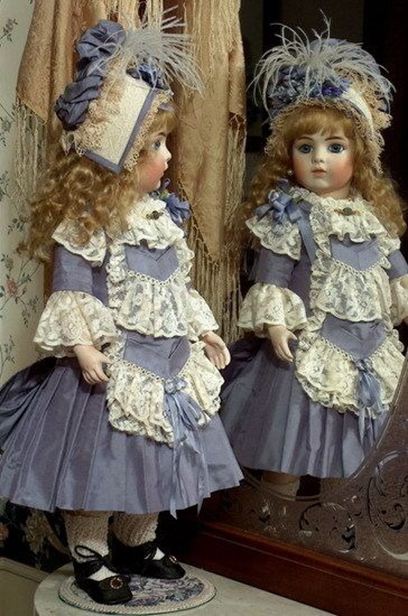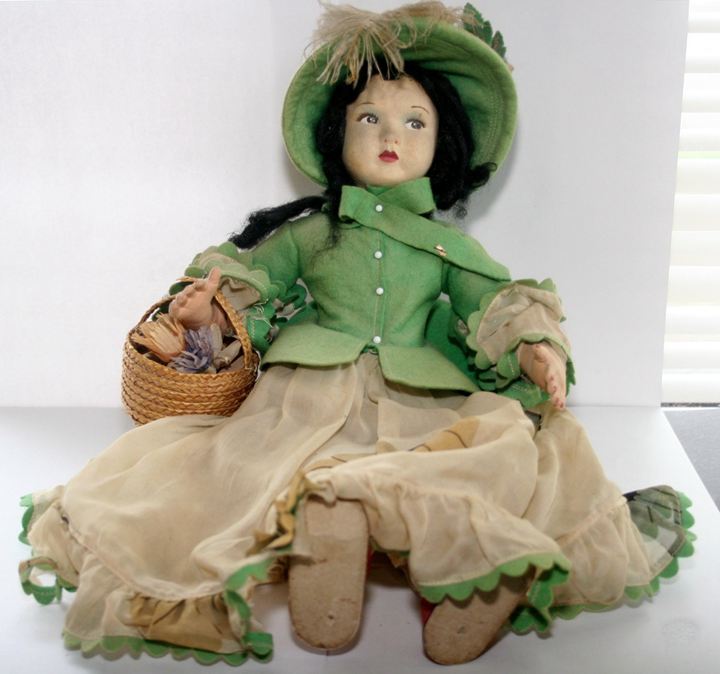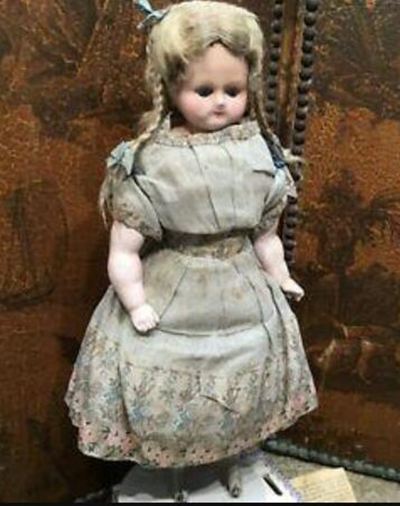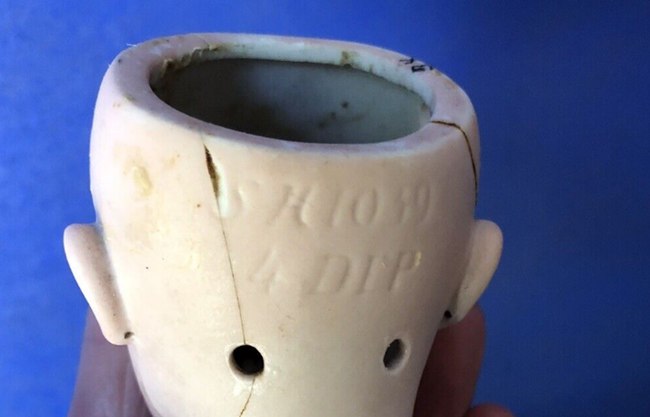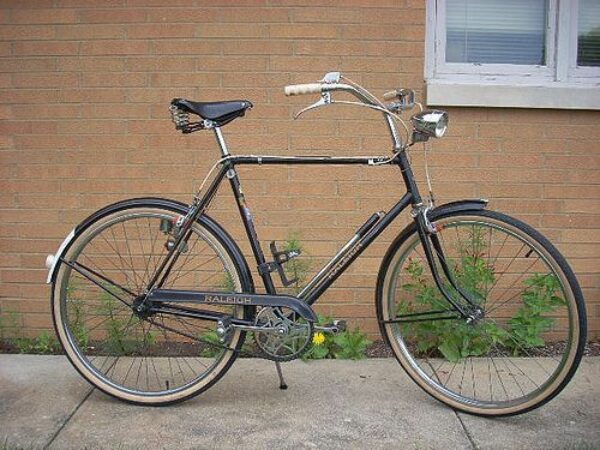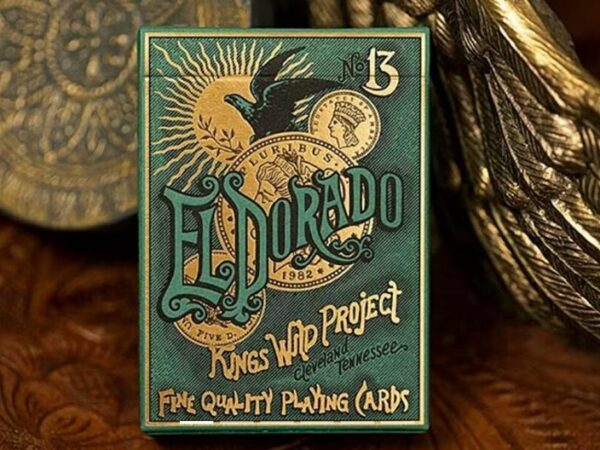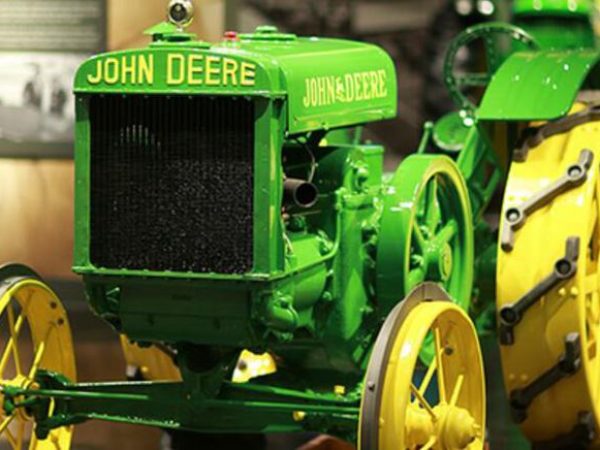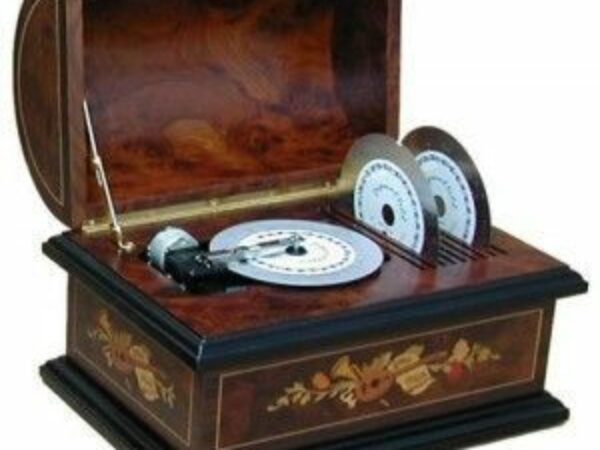From Madame Alexander, Barbie dolls, Cabbage dolls and several others, collectible antique dolls have evolved with us. These items come in different shades, shapes, and sizes. Now they enjoy fame and reputable status among toy lovers and collectors.
It is no wonder a life-like doll by Kammer & Reinhardt was bought by an anonymous bidder for $400,000 at a Bonhams, Knightsbridge auction, making it the most expensive doll ever sold in the world.
This article has much to teach about collectible dolls, their values, worth, and how to identify them amongst many others.
Table of Contents
What are Antique Dolls?
Antique dolls are widely regarded as those produced pre-1920. They’re made from older materials like wood, porcelain, clay, bisque, and wax. We’ve divided antique dolls into the categories below;
S/N |
Doll Types |
Debut Year |
1 |
Rag Dolls |
1830 |
2 |
Bisque Dolls |
1850 |
3 |
Celluloid Dolls |
1900 |
4 |
China Dolls |
1836 |
5 |
Cloth Doll |
1880 |
6 |
Papier Mache Dolls |
1800 |
7 |
Wax Dolls |
1725 |
8 |
Wooden Dolls |
1700 |
9 |
Composition Dolls |
1800 |
10 |
Metal Dolls |
1861 |
Rag Dolls
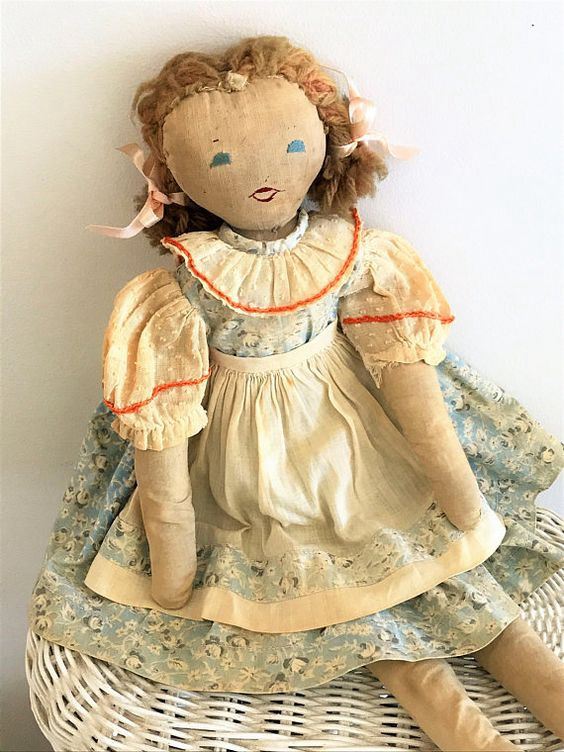
Ragdolls are one of the earliest dolls made in the United States. These dolls were made from scraps and old cloth pieces found in homes.
The book Raggedy Ann written by Johnny Gruelle in 1915 was inspired by an old rag doll.
Bisque Dolls
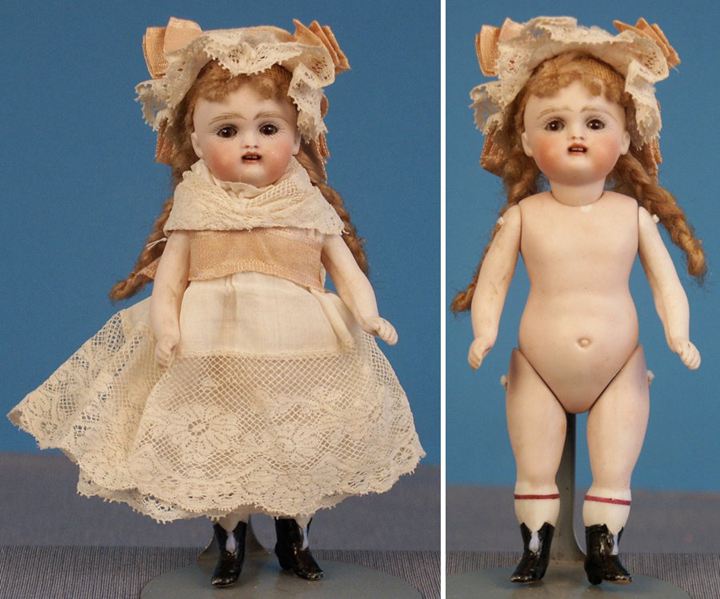
The Germans were the first Europeans to introduce Bisque dolls in the early 1850s, then the French.
However, this was not the end, these dolls made their way into America a few years later and finally into Japan during the first world war. Even till today, these dolls are still very much in vogue.
In the past, artists placed Bisque dolls’ heads on Lady doll bodies which seemed inappropriate for children as they couldn’t relate to the concept of grown dolls. So in 1878, Emile Jumeau created the Bebes Incassable i.e. Bisque head child dolls placed on composition bodies.
This move sparked a fire as the rest of doll making companies used the same blueprint to produce similar child-looking dolls from the early 1950s. Here’re a few examples of bisque doll makers.
- Aich, Menzel & Co Dolls 1918-1930 Austria
- K & R, Kämmer & Reinhardt Dolls 1886-1932 German
- Gebrüder Knoch Antique Dolls 1877 to 1919 German
- Robert Carl Antique Bisque Dolls 1895-1929 German
- Mothereau Bebes 1880-1895 French
Celluloid Dolls
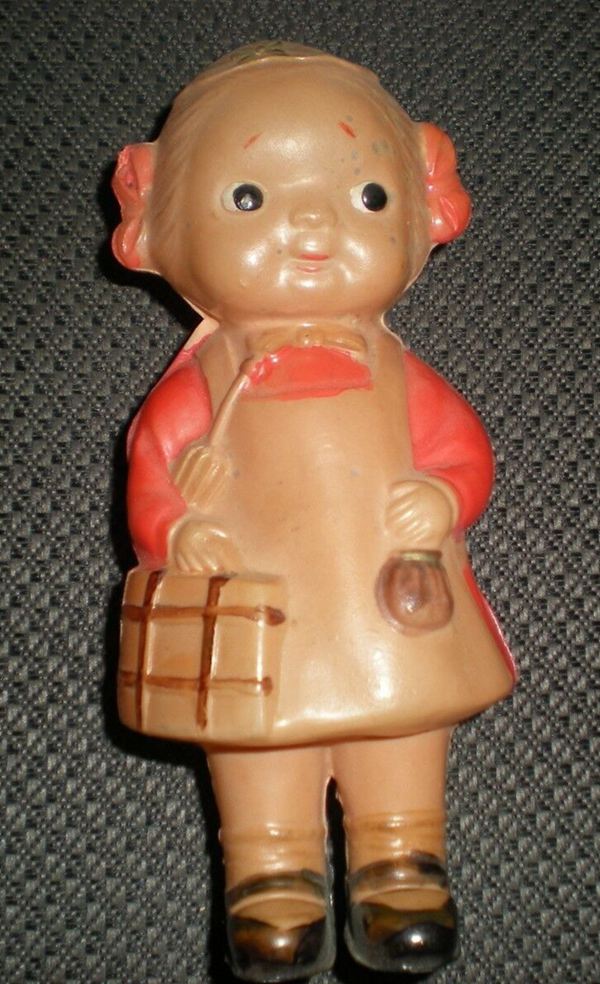
Celluloid dolls are made from Cellulose nitrate, fillers, camphor particles, and alcohol.
They were produced around England, Bavaria, Japan, France, Italy, Spain, and the U.S.A. These dolls are fragile and were stuffed with cloth as the material couldn’t make a complete figure then.
However, all this changed. Around 1908, doll makers made more improvements to the materials, and these celluloid dolls became more durable.
It is also crucial you are aware that the U.S. caused a major setback in the celluloid industry as they banned the use, claiming it’s highly flammable, especially when exposed to open fire or high heat.
Other countries however didn’t slow down on the production and purchase of these dolls as production still continued post-1940s.
The inability of celluloid to withstand moisture eventually led to its demise in the doll world (Celluloid deteriorates when exposed to moisture).
Here’re a few companies who made dolls back in the day
- Giocattoli Brevettati Galetti
- Exploited Company
- Fould and Freure
- Erich Dittmann
- Stephan Erhard
China Dolls
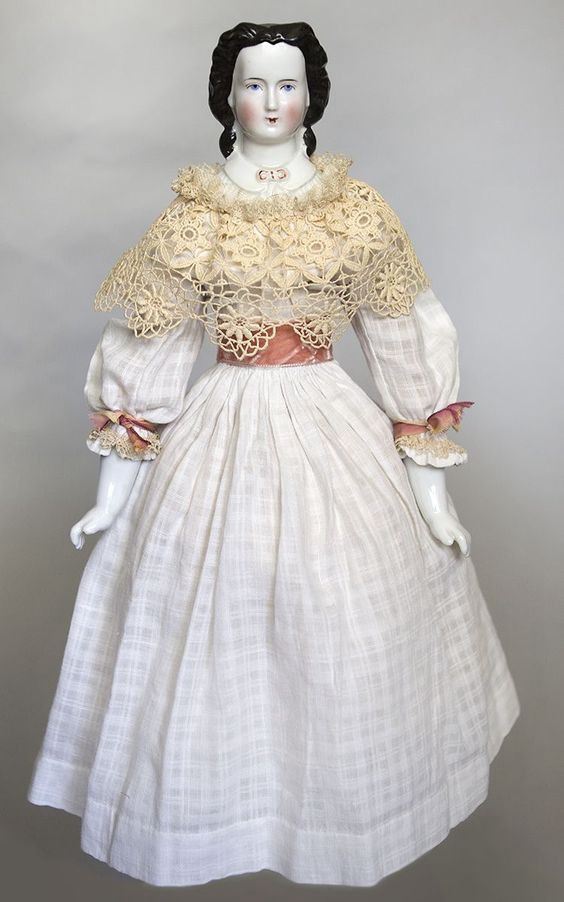
It’s easy to think because they are tagged China dolls, these dolls were made in China. However, this is not so as German companies made these dolls from 1836-1940. The Glazed China head dolls were found on wood, cloth adult bodies with partial China parts.
These dolls have molded hair in braids, and some have wigs sitting on a bald dome head. They range from 3 inches to as far as 40 inches tall with massive weight. China dolls are majorly unmarked, but some have mold numbers on their neck or shoulder plates.
Also noteworthy is that the hairstyles of these dolls appear to have changed over time, closely evolving with Chinese history and hair journey. You can use these changes as a clue when dating your antique China doll.
Cloth Dolls
Clothes and fabric of any type are as old as man itself, and this explains why cloth dolls are one of the oldest inventions ever. The earliest cloth dolls were found safe and preserved in tombs of ancient Egyptian kings and wealthy patrons.
In the 1880s, cloth dolls with painted faces and printed lithographed dresses were popular in New England States U.S.A and by the year 1906, the first cloth dolls with printed photographic faces emerged.
One easy way to identify a cloth doll is by locating a label sewn into the body seam or the doll’s dress, usually with an ink stamp on the back, stomach, or feet.
Some cloth dolls were also unmarked due to the hangtag that came with them that included the doll’s name and other information.
Papier Mache Dolls
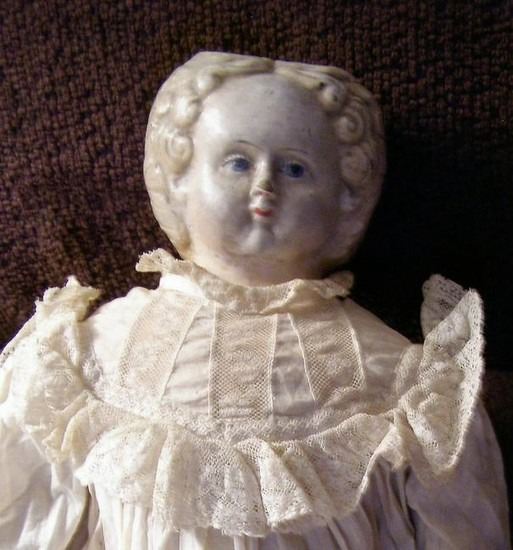
Papier-Mache or Carton Moule are made from a mix of paper pulp and paste oil or resin made together to form a stronger material in a pressed form.
The earliest form of paper Mache dolls were handmade by different individuals. By 1800, Artisans produced pressure molds, making it easier for Papier Mache dolls to be produced in large numbers.
Below are companies popular for making Papier Mache dolls
- Henri Bellet
- Leo Moss
- Josef Bergmann
- Fleischmann & Cramer
- Rock and Graner.
Wax Dolls
Wax dolls are divided into three basic categories, namely;
Ancient 1800s poured wax dolls were made of colored wax, and hair was planted into the heads to make it look like it was growing out of their scalps.
These dolls have molded eyelids and 3D-like facial construction with hollow poured hands and feet. You can also find marks on the finger plates.
The 1800-1900 Wax Over Dolls consisted of plain wax with wigs or molded hair. Molded eyelids are absent, and their limbs are now hard rock solid.
1860-1890 Reinforced Wax Dolls are made of a tinted wad, wig as hair, completely molded eyelids, and realistic facial structures with hollowed poured parts.
Here’s a list of Wax Doll makers;
- William Augustus Webber
- Antonio Vargas
- Thomas Aldred
- Coleman
- Lucy Peck.
Wooden Dolls
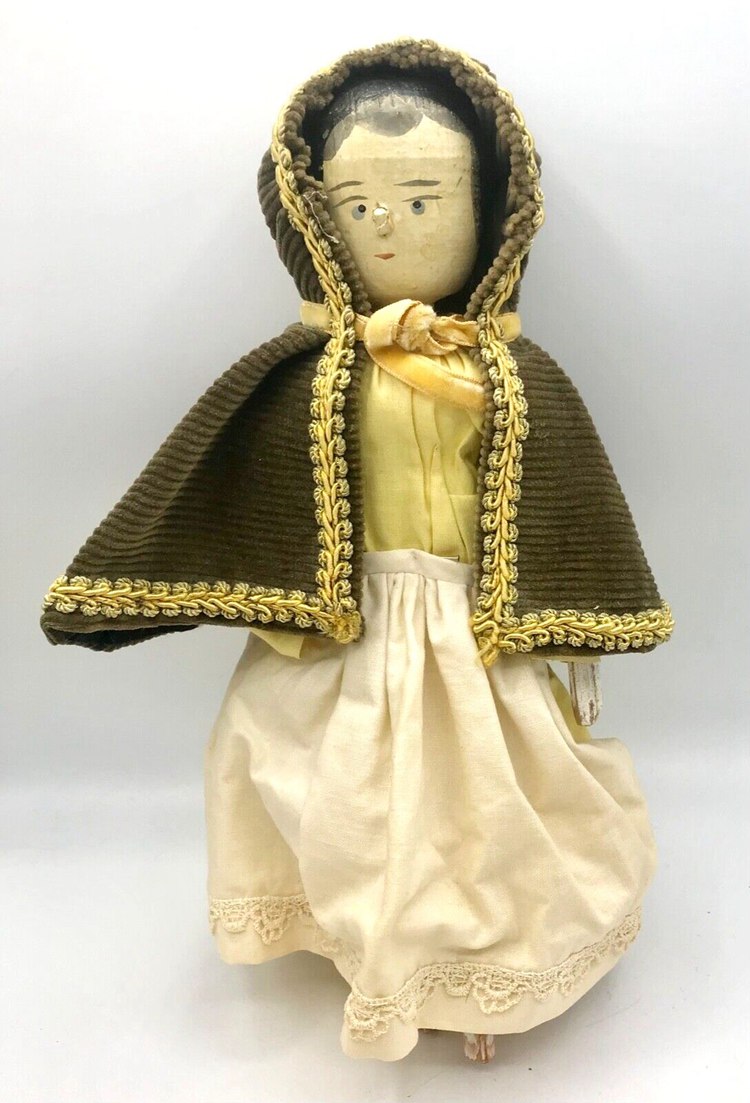
Wood is easy to come by and shape into any form you desire, which is the case for wooden antique dolls. They’re durable and are still very much in use by artists and companies all over the world.
Below are a few companies making antique wooden dolls
- E Randall
- Gustav Schmey
- Rudolf Schneider
- Larkin Co
- Georg Zollner
Composition Dolls
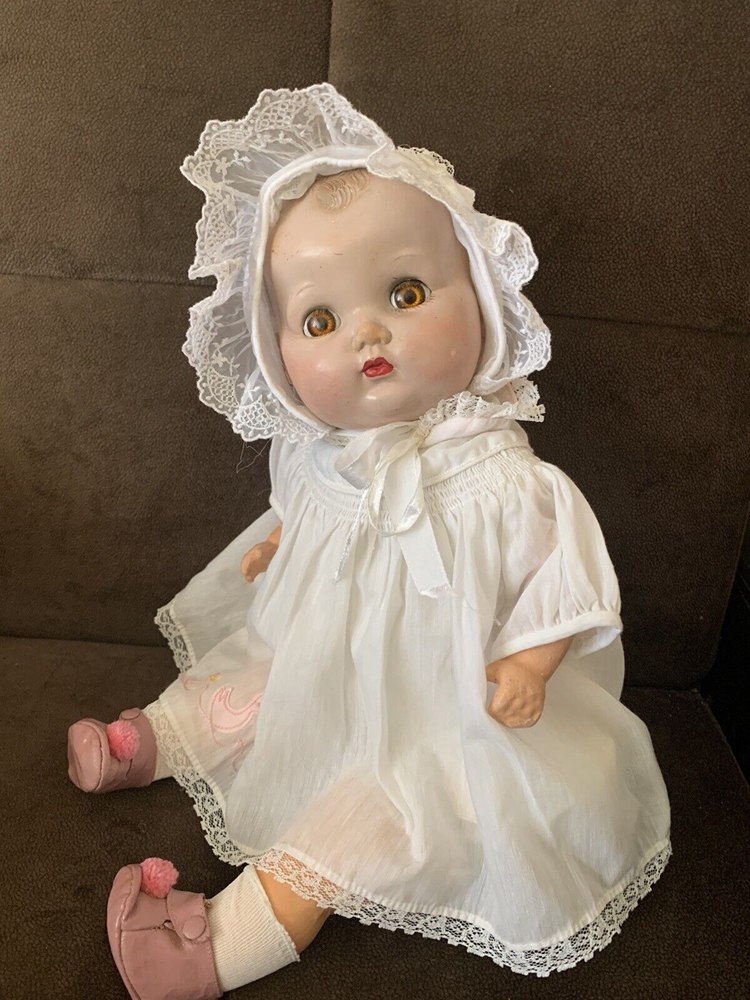
From the French, English, Americans, Japanese, and even the Germans, Composition dolls ruled the early 19th century. These pieces were made from glue, zinc, Japanese wax, and glycerin.
Composition dolls are heavy and dense and can range from white to gray and brown.
You should also know that in the composite doll industry, every company at the time kept their recipe hidden from the rest to maintain its uniqueness and preserve quality.
By 1918, doll makers discovered ground-up sawdust known as wood flour which made the dolls lighter and easy to be painted. American doll makers called composition heads unbreakable.
Water is however composition dolls ‘ greatest problem. This coupled with excessive heat, moisture, and humidity may cause the wood flour to expand or contract and also cause crack lines to begin to appear on the surface, exposing the material beneath.
Plastic was soon discovered, which swept composite dolls out of the market.
Metal Dolls
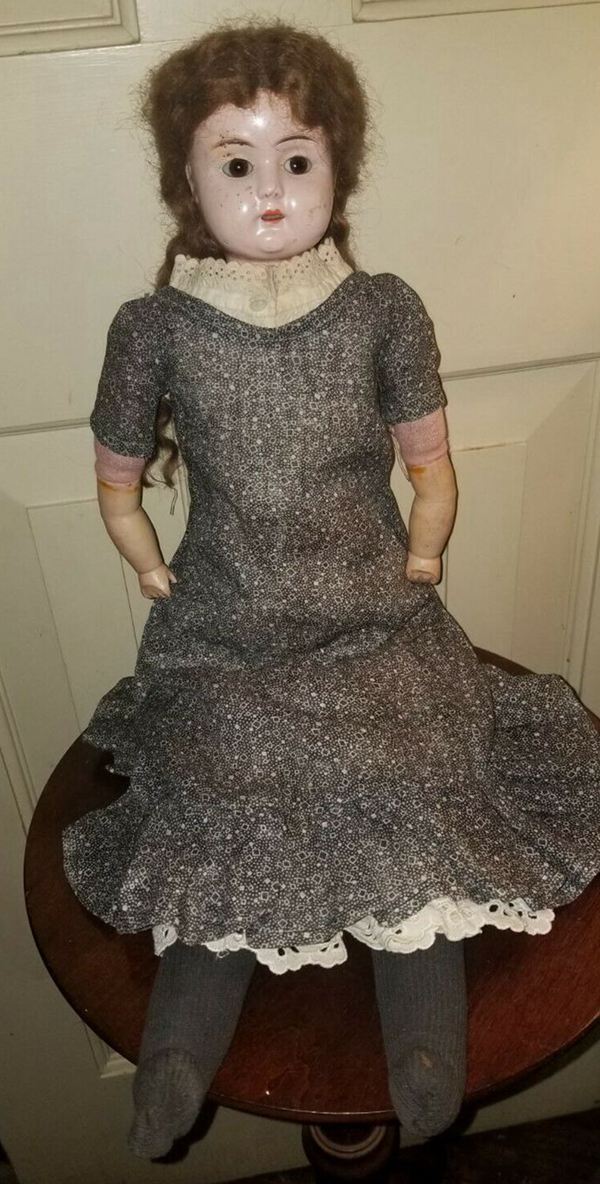
The first metal head dolls appeared on the French market and were recorded by Rene Poulin in 1861. Lucien Vervelle and Sommereisen obtained permission to make metal head dolls in 1876 and 1898, respectively.
As of 1886, German doll makers Max Dittrich & Joseph Schon with Robert Hiller produced a large percentage of metal dolls.
These German dolls were produced from stamped sheet metal joined together and covered in gloss. The metal heads initially began as a worthy replacement for broken China or bisque heads that were rather very fragile.
How Do I Identify Antique Dolls?
From madame alexander to barbie to cabbage dolls and a host of others, identifying antique dolls has been easy. Just follow the guidelines below.
Go Pro
Seek professional help by contacting an appraiser to identify your doll for you and analyze every single detail from head to toe. This can be your first or last resort, depending on your available resources and your familiarity with antique dolls.
Examine the Dolls
Antique dolls had rigid, stuffed bodies from cloth, porcelain, or bisque. Hard and plastic bodies came with newer models of collectible dolls. We can blame these wooden bodies on the materials available at that time.
They also develop craze lines as they age. These lines are scattered all over the face of the porcelain or bisque doll. Look out for discoloration and dullness, too, as these are signature marks of antique dolls.
Maker’s Mark
Manufacturer and company marks are usually imprinted on the back of your dolls’ heads or necks. Sometimes, they’re in between shoulder blades, underneath the feet, or as clothing tags on the doll’s clothes.
These marks are in the form of letters, numbers, names, words, roman numerals, or a union of either.
Make sure to read this mark as they often have information on the doll, including the brand name, the doll size, and where and when the company or designer made it.
Online Reference
One way to help you easily identify your doll are online references, some form of database where you only need to input the maker’s mark. You’ll get dozens of facts about your item.
It’s one of the most accurate ways to get information on your doll and discover its true worth. Visit Dollreference.com and follow the prompt.
Place of Origin
The Mckinley Tariff Act established in 1890 states that all the goods shipped into the U.S. from overseas must be marked with their place of origin to make it easy to find where they’re from.
Understanding the origin of these dolls may help you directly understand some strange details in their setup, costume or even history. For instance, a German doll will most definitely be different from a French Doll.
Join a Forum
The National Antique Doll Dealers Association was established in 1986 as a forum for doll dealers and sellers to effectively operate a healthy connection and relationship built on trust and confidence with the general public and doll collectors.
One of the activities they do here is to ensure they have updated and vital information on every doll sold or available for display. The United Federation of Dolls Club Incorporated is also one of the international organizations strictly responsible for collecting dolls.
Study The Materials
Different materials were used to produce collectible dolls and were synonymous with their place of origin. For Europe, porcelain dolls dominated most of the market in 1800; these porcelain parts like their hands, feet, and legs were manufactured in China and were called Chinese Porcelain.
Hold the head and feel the texture with your teeth to check if your doll is porcelain. If you get hard or cold feedback, then it’s porcelain. The body is made from totally different materials like soft leather or cloth.
Bisque dolls were made in France and Germany with porcelain heads and a matte finish. By 1900, China and the United States had started producing bisque dolls.
Bisque dolls are unglazed ceramic porcelain dolls, and they have tiny pores that can collect specks of dust and dirt. The more dirt a doll collects in its pores, the older your doll probably is.
Observe The Eyes and Other Parts
The painted eyes on dolls are also used to determine their age. Sometimes, antique dolls can also have static eyes and glass eyes. Later down the lane, eyes that could open and close when rocked came into the picture.
Pre-1870 dolls had eyes with heavy paintings and were usually light blue, brown, or black on rare occasions. From 1870 to early 1900, these dolls began to have inset glass eyes that remained in one position. Early 1900 dolls had large and round eyes which could stare sideways.
Most porcelain dolls’ necks, shoulders and heads are made with one mold. There are usually two holes at the junction where the head is attached to the rest of the doll. Collectors can also spot these holes at the back of the doll’s neck.
What is Your Doll Wearing?
The outfits dolls wore between 1800-1900 were usually made from leather compared to the synthetic materials and Victorian-era-inspired dresses that dolls from subsequent years wore. Outfits are a very integral part of any doll’s history; they add to the aesthetics and value of the item as well as help to easily identify them should the need ever arise. We’ve often been able to name a doll off the top of our head simply by looking at their dresses.
Antique doll dresses never have modern Velcro fastenings or zips. Also, check the inside of these dresses if you can find any tags that’ll supply additional information about your doll.
Note the Hair
Antique dolls from China have painted hair with a deep middle part. 17th-century dolls wore rooted hair instead of the painted hair. This hair can be confused with real hair and is sometimes made from human hair.
Hairs are mostly black, brown, or blonde colored except for German dolls, which had mohair or human hair glued on their heads. Red hair is a rare occurrence for porcelain dolls as it’s widely believed to be a sign of ill luck. Mohair is found on angora goats.
What is Your Doll Stuffed With?
Antique dolls are never stuffed loosely or with nylon, polyester, and silk. They’re tightly stuffed with sawdust or horsehair. These materials are heavy enough to carry the weight of the doll’s porcelain/bisque head.
Study Guides, Books, and Catalogs
So many magazines, both hard and soft copy versions, have been published by different authors for collectors and admirers to update their library on collectible dolls. The Antique Doll Collector Magazine is a pay-per-issue publication that is updated frequently to keep you in the loop about the trending antique dolls.
Here’s a video addressing the issue of reproductions for antique dolls and how to identify them.
How to Determine the Value of Antique Dolls
Numerous factors come into play when determining antique dolls’ value. Let’s show you how to determine the value of these dolls
Makers Name
People often go for names when picking antique stuff, and collectible dolls are not left out. Dolls from popular artists like Jumeau, Bru, and Huret run up to over $25,000. S.F.B.J. dolls are also worth a handful.
Use An Appraiser
The first and most important tip we’ll always advise is that you seek the service of an appraiser when trying to determine the value of your antique dolls. Appraisers will critically examine your doll and arrive at a given value to guide your conduct in the market.
By Age
Older dolls and earlier models are the most collectibles and valuable, especially if they’re still intact in condition. Most French fashion dolls from 1860-1890 were priced over $2000 due to the period they emerged.
Condition
The overall physical state of your doll is pivotal in determining the value. No one will purchase or do as little as examining a doll with missing parts, worn-out looks, or dirty dresses. Keep your antique doll in complete and near mint condition with their original dresses and tags as much as possible to get the optimum value for money.
How Rare is Your Doll?
Special edition or limited-edition dolls are not as common as random ones, as they’re usually restricted to a particular number during production. Hence they’re usually exhausted within a given time frame.
For German dolls, the character-like faced dolls top the list for most collectible, and they’re also very rare to come by.
Landing on one or a few of these means you’re sitting on wads of cash, and you have a highly sought item in your hands.
Compare Prices
This is a more practical approach to getting the value of your antique doll. It involves going to the store either online or physically and comparing previously sold prices with the new ones you have. Having an idea of previous prices will help you understand how to set new prices.
It’s in the Details
Generally, dolls feature a wide range of details from the eyes, movable body parts, and face make-up. Still, in some cases, there are more details like closed mouths, expressions (happy or sad), and upgraded high-end face make-up.
More detailed bodies that can change into different poses, e.g., composition and jointed bodies, also sell for a higher value than paper mache and the usual leather-bodied dolls.
Check this video by Dr Lori out.
Where to Buy Antique Dolls
No need to panic about where to buy antique dolls, as we’ve helped you with places you can get them both online and offline.
Online Stores
There’re sellers on Etsy, eBay, Rubylane, and the likes who sell different types of antique dolls in different styles and from different years. Just visit one of these sites listed above and treat yourself to various collectible gems.
Estate Sales
You can be lucky to stumble on a mini sale outside a house. Estate sales are an extended version of yard sales; virtually everything you see inside and outside the house is up for sale.
One tip we always give those interested in estate sales is that they get there early enough to pick the good ones and also conclude at a very healthy bargain with the sellers.
Flea Markets
Flea markets are popular for their small size and availability of really antique items, it’s usually the top pick for most collectors when it comes to buying any antique, and the good thing is they’re everywhere.
You also have a one-on-one conversation with the sellers and get a bit of history on what you’re buying.
Doll Shops
Due to the highly collectible nature of antique dolls, a few individuals have developed the initiative of creating shops selling just old and new dolls. The big bonus of these shops is that it’s purely dolls from different centuries with very extensive information on them.
Auctions
Auctions are a festival of exhibitions and sales for antique collectibles. The process of procuring an item at auctions is very straightforward and stress-free but also extremely capital intensive (items in the auction are purchased through a bidding process which leads to a drastic increase in price).
There’s also a time frame attached to the sales of these goods, which means you must act fast when trying to buy an item, whether at an online auction or physical one.
Final Thoughts
From your first read-up to this point, we’re sure to have answered every pressing question on antique dolls and how to identify them. Here are key takeaways from the article.
- Keep your composite dolls away from water, excessive heat, or any form of moisture to prevent damage.
- No detail is too important to be ignored when identifying Antique dolls, from the face down to the limbs.
- Antique dolls are usually tightly stuffed with sawdust or horse hair. Any stuffing different from this means it’s not vintage.
- Keep your dolls close and your appraisers closer at all times.
